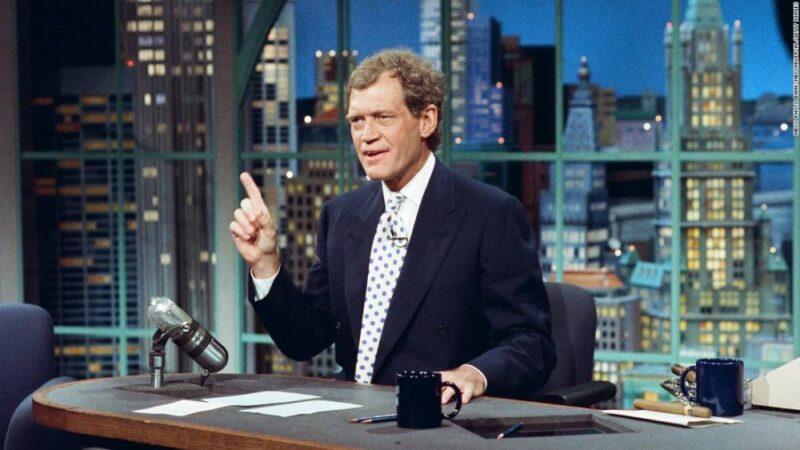Bill Carter, a media analyst for CNN, covered the television industry for The New York Times for 25 years, and has written four books on TV, including The Late Shift and The War for Late Night. He is an executive producer of “The Story of Late Night,” a new CNN Original Series on the history of the iconic genre. Watch on Sundays at 9 p.m. ET/PT starting May 2, and listen to Carter’s companion podcast “Behind the Desk: The Story of Late Night” here. The opinions expressed in this commentary are his own.

Over the past year, the pandemic has disrupted the business of late-night television (and every other kind of business and form of entertainment) in ways the industry had never experienced in its more-than 60-year history.
In the deepest moments of the crisis last spring, all the shows found themselves shut down, with no immediate prospect of when, how or if they could continue in production. But as they played around with what the latest technology made possible, the shows discovered that at least some of the essence of late night as we know it could go on — albeit in a limited, hangout, seat-of-the-pants basis.
So Jimmy Fallon wound up in his country house with his adorable daughters romping around, Seth Meyers looked like he moved into his attic, and James Corden decamped for his garage, where he said he had previously never done a lick of work before. Nobody got haircuts or had their funny comments punctuated with rimshots. And everybody told jokes with no audience laughter to supply affirmation — a remarkable thing for experienced TV hosts and comics to take on. (What comic doesn’t get the shakes if even two straight jokes don’t get laughs?)
Now, with the gradual lifting of the restrictions the pandemic imposed, a different question looms: Will the shows go on the same way they used to? It’s unlikely. After all, genies don’t crawl back into bottles. And cost considerations were already looming like a menacing storm over the future of late night. So it’s likely some, or many, of the changes we have seen in late night over the past year will solidify into new conventions.Read More

Late-night hosting is a dream job for some, but it's a lot harder than it looksThat almost surely will be the case with guest interviews. If a guest really isn’t coming to New York for a reason other than promoting his/her movie with Fallon, why pay the five-star hotel and the personal hair and makeup artists? Especially if it’s not an A-lister we’re talking about. A conversation on Zoom still has hazards — video or sound interruptions, chiefly. But mostly they work fine, and audiences have seen the rough edges to these exchanges and mostly rolled with them.It’s true that guest interactions with hosts are much better when they are more than a forced chat. Fallon likes to get them into games with him, for example. And the “repartee” that has generated some of late night’s greatest moments is much harder to reproduce remotely.I also suspect that just seeing many of the most glamorous stars, not only from the neck up but in their full glory, will still have a strong appeal. It has been the habit in late night for some time that female stars, in particular, come to the shows dressed spectacularly, as though for a movie opening.Another question is what to do about the bands. They are a regular, substantial item in the budget, and they’ve been hugely important in livening up audiences and sending the signal that what you’re watching is a big-time entertainment show. Some shows may find the economics compel some tinkering with the size of bands; some may drastically reduce the number of players; and some may decide that a band is ultimately an expensive luxury for a scaled-down show. The big network shows have also had costume and prop departments. Maybe those get farmed out on an “as-needed” basis.The constant, though, will be the live audience. I have talked with many of the current hosts, and getting back to hearing spontaneous laughter generated by their work is like breathing on their own after being in a diving bell. The experience is exhilarating. So even if the studios of the future are far smaller than Jimmy Kimmel’s big theater on Hollywood Boulevard, or the Ed Sullivan Theater on Broadway for Stephen Colbert, there are still going to be fans lining up to find a seat where they can be entertained.

The pandemic won't be the end of movie theaters, but it will forever change themMy guess is also that we’ll see some contraction in the number of shows that fit the description of a late-night show — a talented host, topical jokes, some conversation and sometimes some music — because even as their economic base has eroded, they have proliferated like sneaker styles.Some of these shows may fade away; but not too many. I would predict that if the genre got down to just a few regular shows — maybe six or seven — some of them would start doing better, and then networks, streaming services or websites would be right back to saying: Hey, we should try one of these.To say late-night shows had never expected to face anything remotely close to a situation like the pandemic would be akin to saying dinosaurs never expected to find themselves challenged to deal with the sudden arrival of an asteroid.Maybe if they had had Zoom they could have managed.
The truth is, pre-Zoom, late night probably could not have managed either. But with small computer-linked cameras, and especially with the ubiquity of Zoom making remote conversations with guests not only acceptable but life-saving, the shows didn’t have to abandon the old “must-go-on” mantra. They could, and they did.
Source: edition.cnn.com

